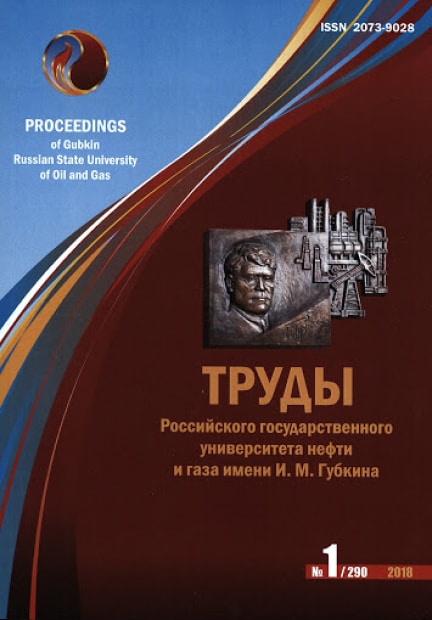TECHNIQUE OF ENGINEERING EVALUATION OF HEAT FLOW THROUGH SHELL SURFACE OF CRYOGENIC LIQUEFIED NATURAL GAS TANK
UDC: 622.691.23
DOI: -
Authors:
Ivantsova Svetlana G. 1
1,
Rakhmanin Artem I. 2
2
1 Gubkin Russian State University of Oil and Gas (National Research University)2 LLC “PO “Transgas”
Keywords: cryogenic storage tanks, LNG storage, heat insulation, heat calculation
Annotation:
Optimization of investment costs for planned projects of the construction of complexes for liquefaction, storage and shipment of natural gas requires methods for calculating the heat regime of cryogenic tanks for liquefied natural gas. These allow to make optimal design decisions on the choice of heat insulation system that directly determines the vaporization rate of the product, and thus the volume of capital investments at the construction stage and the cost of operation of the evaporating gas extraction system and its re-liquefaction. A method of engineering calculation of the heat flow through the multilayer wall of the full containment cryogenic tanks, which consists of an external reinforced concrete wall, carbon steel liner on the internal surface of the reinforced concrete wall, a layer of flexible compensation mats of fiberglass, a layer of loose-fill heat insulation of expanded perlite sand and an internal tank of cold-resistant steel. It is proved, that in heat processes calculations of full containment cryogenic tanks with acceptable for engineering problems accuracy it is possible to approximate the cylindrical surface of the multilayer wall of the tank with a plain surface without taking into account the thermal resistance of the carbon steel liner and the internal shell. It is also possible not to take into account the turbulent convection of the LNG boundary layer along the walls of the inner shell.
Bibliography:
1. Борисов B.B., Владимиров А.Е., Зверева Т.В., Черепенников А.Н. Методика расчета стационарного температурного режима большеобъемных низкотемпературных резервуаров для хранения СПГ//Труды МИНХиГП имени И.М. Губкина. — 1980. — № 153. — C. 123-131.
2. Одишария Г.Э., Сафонов B.C., Тарабрин В.А. Тепловые процессы в низкотемпературных изотермических хранилищах сжиженных газов//Газовая промышленность. — 1982. — № 11. — С. 43-46.
3. Шкловер А.М. Теплопередача при периодических тепловых воздействиях. М.-Л.: Госэнергоиздат, 1961. — 160 с.
4. Поваляев М.И. Покрытия и кровли промышленных зданий. — М.: Издательство литературы по строительству, 1969. — 177 с.
5. Сафонов В.С. Физические особенности и способы предотвращения стратификации СПГ в изотермических резервуарах. — Обз. информ. Сер. Транспорт и подземное хранение газа. — М.: ВНИИЭгазпром, 1989. — Вып. 7. — 50 с.
6. Михеев М.А., Михеева И.М. Основы теплопередачи. — М.: Энергия, 1973. — 344 с.

